Return to Photo Index Return to Clickable Map Return to Home Page
Travel Pictures - ZIMBABWE - 1999
I entered Zimbabwe at a time when the country was firmly in
the grips of a dictator and about to implode from within due to rampant
corruption, misguided government programs, and a population decimated by
AIDS. Zimbabwe embodied most of the economic and social problems (other
than outright civil war) that plagues much of Africa. However, a country
in rapid decline can expose the dynamics that impede the growth of a
nation, and Zimbabwe revealed to me the root cause for the rampant
corruption that continues to stifle progress in sub-Saharan Africa.
I began my travels at the spectacular
Victoria Falls and visited several other parks including Hwange NP and
Matobo NP as well as the ruins at Great Zimbabwe. Zimbabwe's contrast in
lifestyle was striking - from rural villages with stick huts amongst
baobab trees to modern cities with glass and steel skyscrapers - a clear legacy
of the two cultures that shaped this nation.
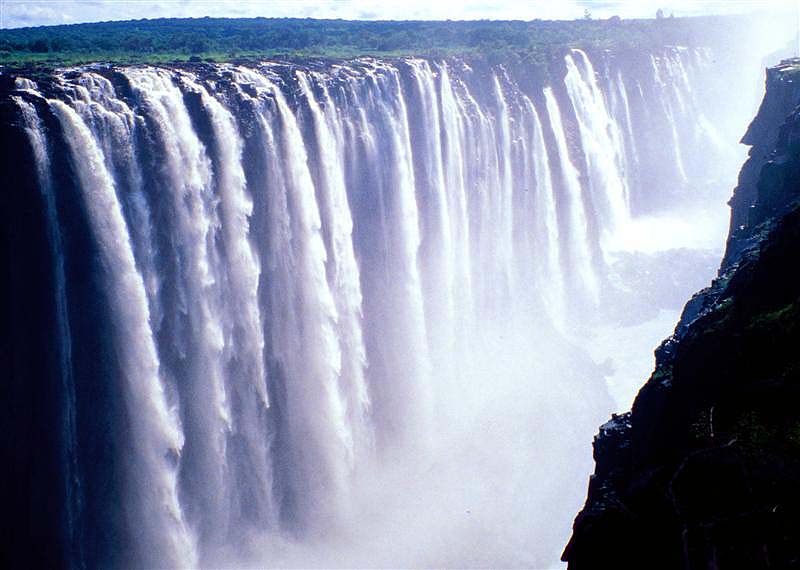
falling water. The pre-colonial name of the falls, Mosi-oa-Tunya, means "the smoke that thunders"
and is the official name for the falls in bordering Zambia -
Victoria Falls, Zimbabwe
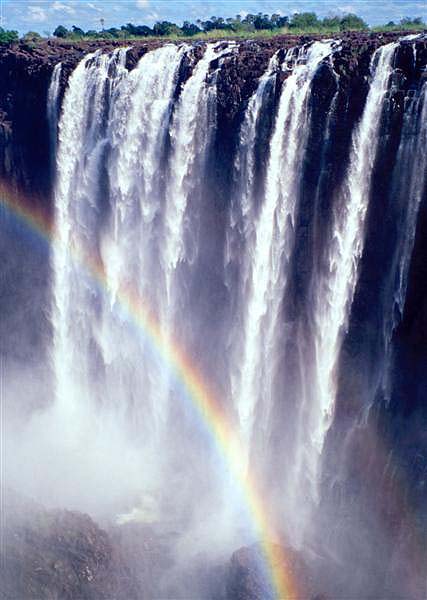
The towering plume of mist creates vivid rainbows as well as an isolated pocket of dripping rainforest -
Victoria Falls, Zimbabwe
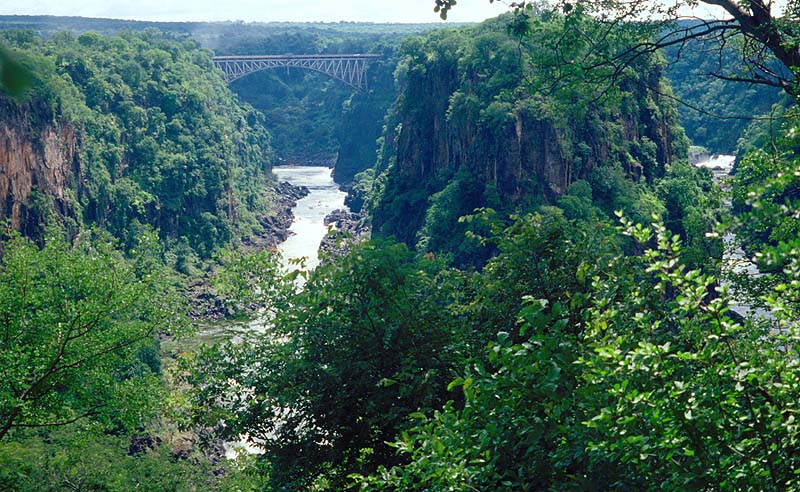
daredevils with whitewater rafting and bungee jumping. This photo includes a party of rafts as well as a bungee jumper making the plunge from
the Victoria Falls Bridge (at left). As if the Zambezi River's class V rapids aren't enough, the river's pools are home to African crocodiles! -
Victoria Falls, Zimbabwe
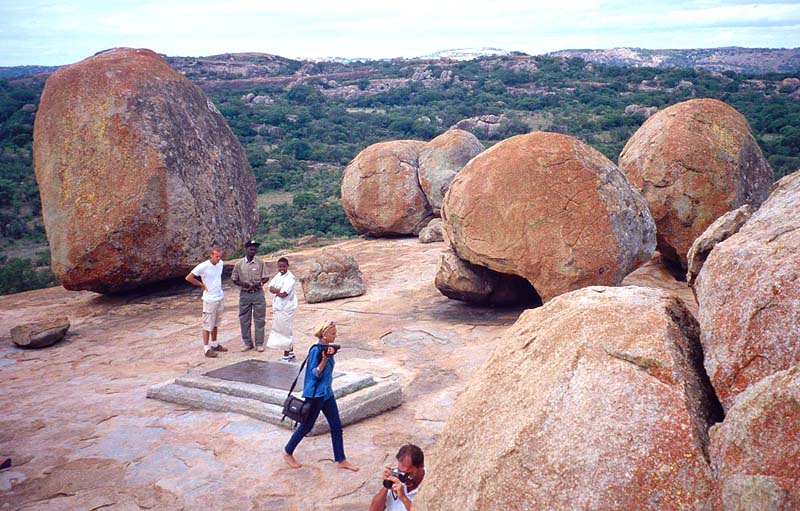
the scholarship program funded by his estate. The Rhodes scholarship enables students from territories currently or previously under
British rule (and Germany) to study at the University of Oxford. Regarding the photo, you might ask how such massive, rounded boulders
could find their way to the summit of a granite mountain? Well ... time, rain, wind, temperature change ... or ancient giants? -
Matobo N.P., Zimbabwe
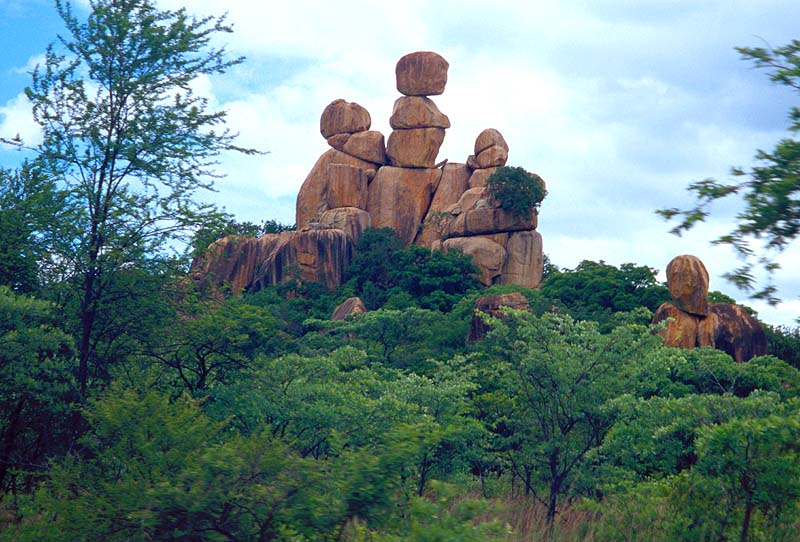
Matobo N.P., Zimbabwe
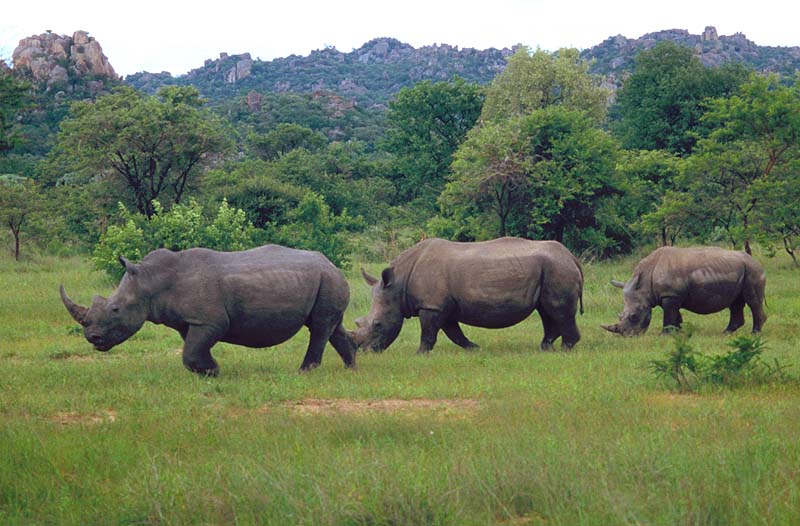
Matobo N.P., Zimbabwe
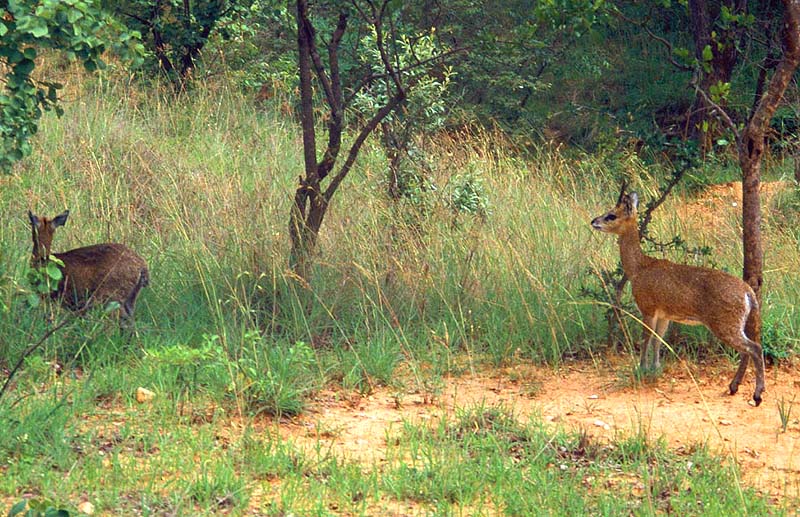
always walk around on the toes of their hoofs like ballerinas (see the back hoofs of the klipspringer at right) -
Matobo N.P., Zimbabwe
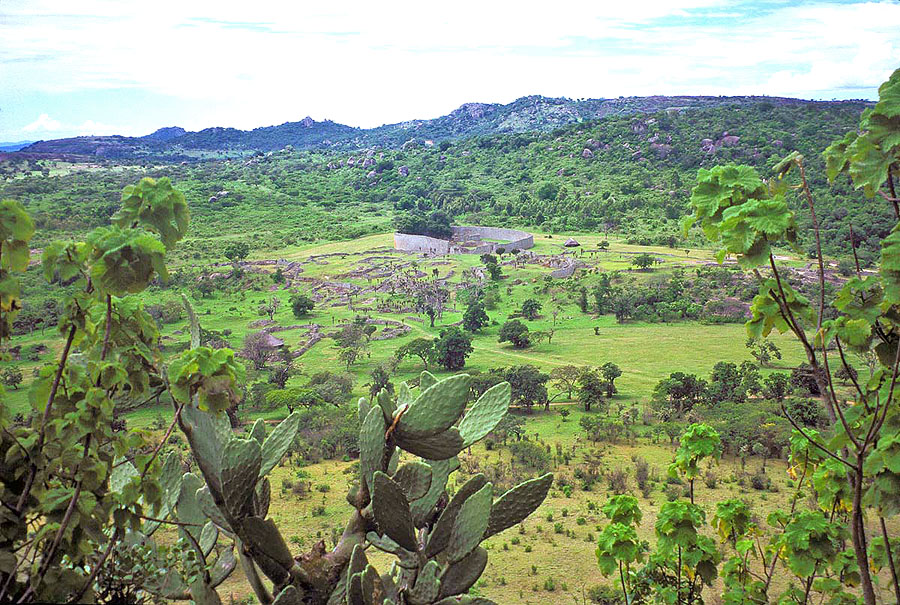
Zimbabwe, formerly called Southern Rhodesia in honor of Cecil Rhodes, was renamed in 1980 after these very ruins. The horrible irony
is that the political changes that came about in 1979 have led to the ruin of a country that was renamed after - ruins -
Great Zimbabwe, Zimbabwe
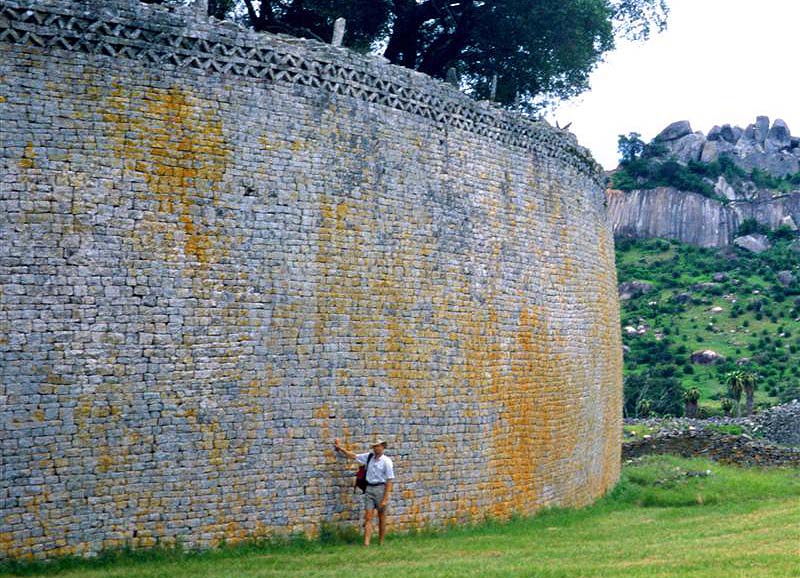
15th centuries. The first Europeans to visit Great Zimbabwe were Portuguese traders in the 16th century. Determining exactly who constructed
the ruins has been controversial - with the archaeological evidence often overruled by the politics of the day. In colonial times, the ruins were
said to be the product of Arabs or Phoenicians because they could not have been built by black Africans. With the creation of the nation of
Zimbabwe (and all-race elections), the ruins became a great symbol of achievement for black Africans. However, as I write in my book,
people should not be defined by the culture of their ancestors, but by the culture they adopt -
Great Zimbabwe, Zimbabwe
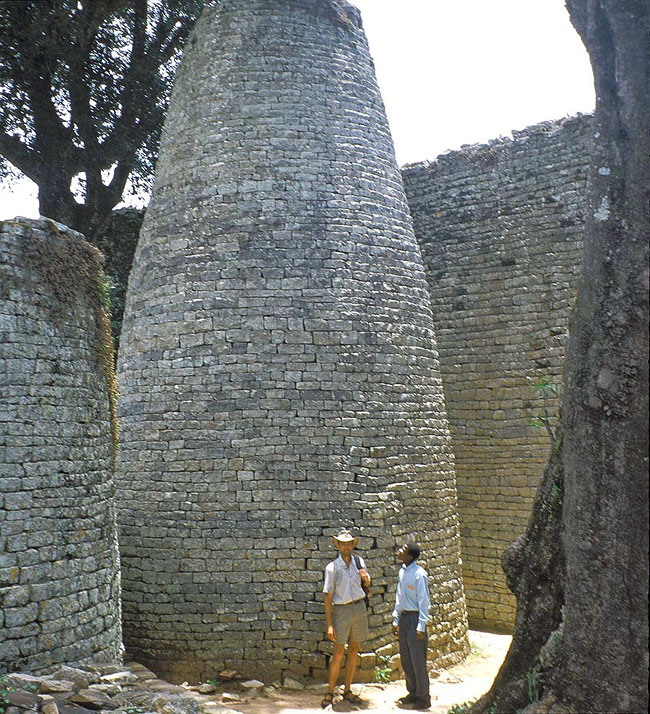
Great Zimbabwe, Zimbabwe
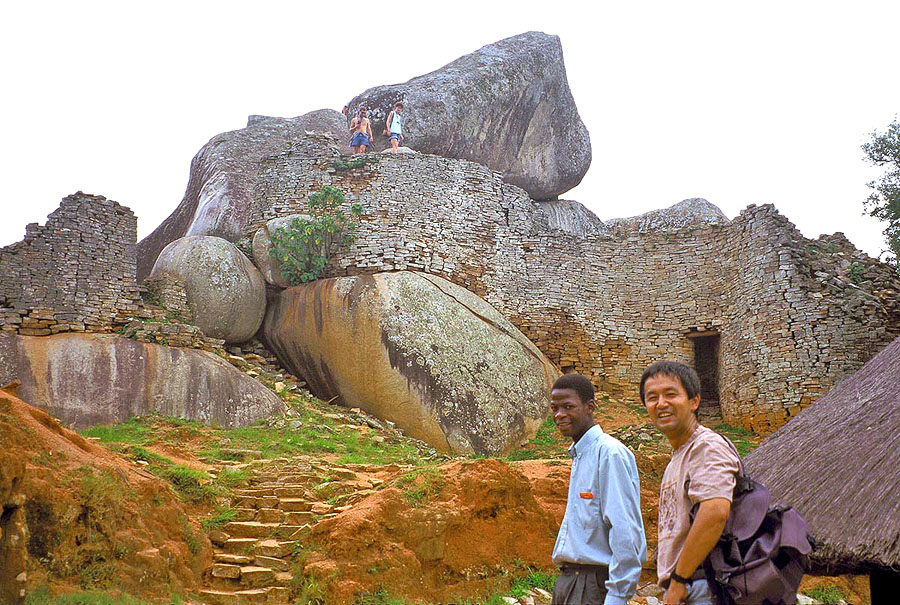
Great Zimbabwe, Zimbabwe
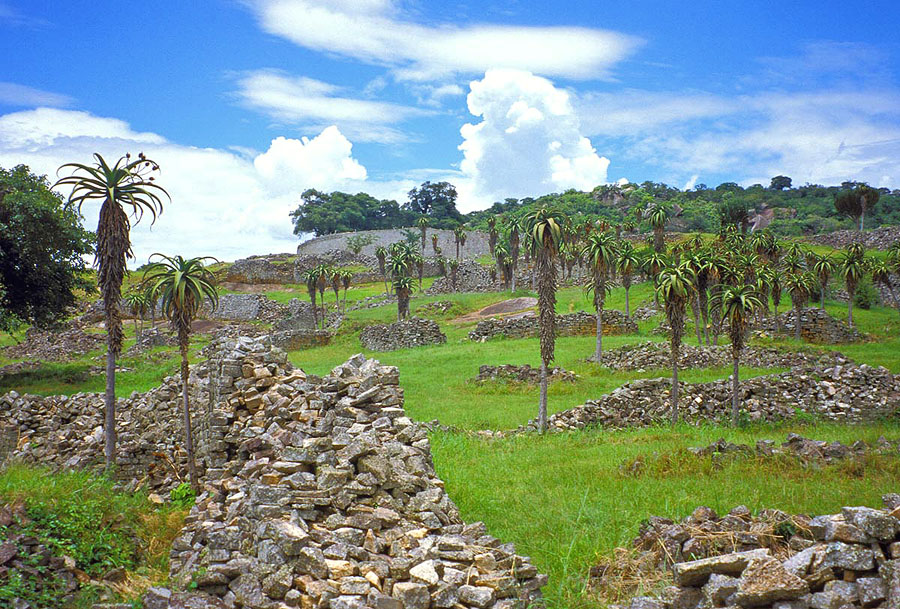
Great Zimbabwe, Zimbabwe

with the stereotype of blacks dancing for whites. However, I quickly realized that these Zimbabweans
were fortunate just to have employment in a land with limited opportunity -
Great Zimbabwe, Zimbabwe
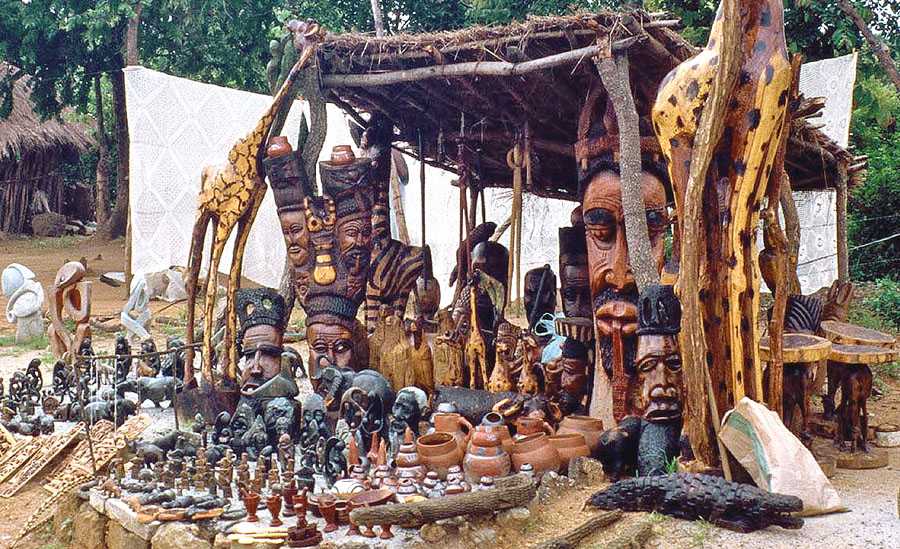
created a souvenir gauntlet at the entrance to Great Zimbabwe -
Great Zimbabwe, Zimbabwe
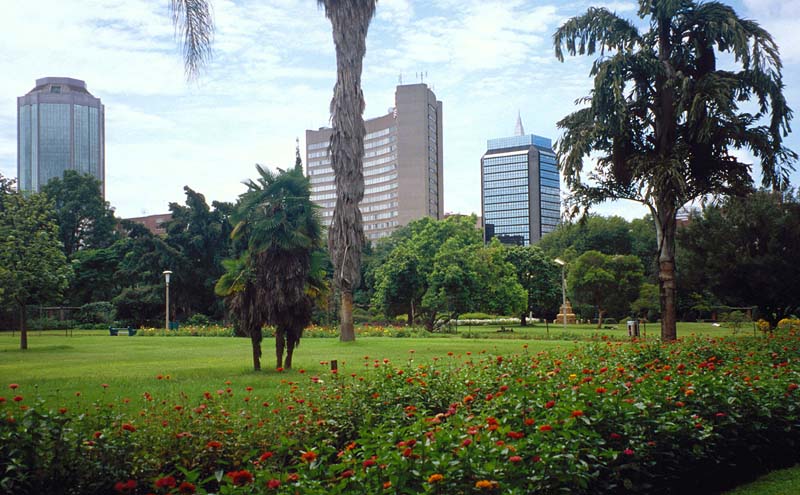
that was previously referred to as the "breadbasket of southern Africa" was transformed from a net food exporter to a
country requiring emergency shipments from the World Food Program just to avoid an impending famine -
Harare, Zimbabwe
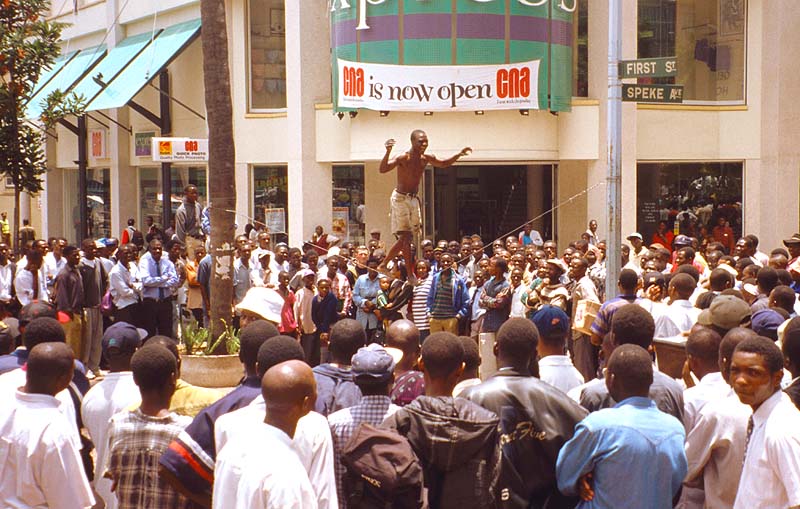
about on this steel wire as thin as a clothesline! After completing his routine, the Zimbabwean discriminated wisely - with the full attention of
the audience, he rushed up to the three whites in the crowd (me and two Icelandic travelers) to collect "donations" for his performance -
Harare, Zimbabwe

future in Mozambique verses the opportunities they would have if they had been born in a country like the United States -
northern Mozambique
Return to Photo Index Return to Clickable Map Return to Home Page
For authorized use of these photos, please contact Ron Miller at TheHappyCannibal@gmail.com